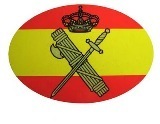Sue Burke's Blog, page 76
February 23, 2013
I win!
 stillnotbored
's February writing contest -- actually, I'm a co-winner, and the other winner's entry is awesome, too:
stillnotbored
's February writing contest -- actually, I'm a co-winner, and the other winner's entry is awesome, too:http://stillnotbored.livejournal.com/851539.html
Thanks for the contest, Jaime Lee Moyer!
February 19, 2013
Go Ahead — Write This Story: Sidekicks
We all need someone to talk to. The protagonist or antagonist in a story may need a best friend, partner, minion, sister, husband, or subordinate. Sidekicks can do more than help the author avoid long internal monologues. They can provide a different point of view, useful skills, narration, humor, pathos, plot twists, advice, admiration, conflict, contrast, and love. In short, a sidekick permits constant interaction and action. Famous sidekicks include Hobbes from Calvin and Hobbes, Hamlet’s friend Horatio, Xena’s friend Gabrielle, Sherlock Holmes’ Dr. Watson, and Don Quixote’s squire Sancho Panza. Not every story needs a sidekick, of course, and if you need an idea for a story, here are a few:
• This is a story about a florist hired to provide a bouquet and decorations for a wedding to seal the alliance between warring magical kingdoms with opposing views on ornamental horticulture.
• This is a story about a vacation on artificial island floating across the Atlantic Ocean.
• This is the story about someone who buys a ticket in the National Health Lottery and wins first prize: 100 years of extra life in robust health.* (*Some restrictions apply).
— Sue Burke
February 6, 2013
Guns in Spain
You can, of course, get guns: 3,516,681 weapons are in the hands of private owners, and another 320,903 belong to the police, Guardia Civil (Civil Guard, sort of a national police force), or military. Private owners possess 2,793,614 shotguns and 299,226 rifles – hunting is popular in Spain – and 191,636 revolvers or pistols, 189,785 carbines, and 42,420 other weapons. Machine guns and submachine guns are banned from private ownership. (2011 figures)
This works out to 10.4 firearms per 100 people. Spain ranks 18th in the world ranking of privately owned guns by country, and 61st in the rate of private gun ownership per population, according to GunPolicy.org.

To get a gun, you have to apply to the Guardia Civil (this is their symbol) for a license, as explained here.
You must prove that you are mentally and physically able to use weapons properly without causing danger, injury, damage, or difficulties to other people or yourself. You must know how to store, maintain, and use arms. You must store the weapon properly: in a 300-kilo safe anchored to the wall or floor. The number of arms you may possess at any one time is limited: only six shotguns and one handgun, for example.
After you buy your weapon, it will be delivered to the nearest Guardia Civil office, where you will pick it up. For long weapons, your licence will be reviewed every five years, and every three years for short weapons. The Guardia Civil will check to see that the weapon has not been altered and is stored properly. You can lose your gun license for any criminal conviction, including speeding and drunkenness.
When you buy bullets, you must present your ID and gun license, and your purchase will be reported to the Guardia Civil. You may buy no more than 100 bullets per year for short weapons and stockpile no more than 150 bullets at any time. You may buy 1000 bullets or cartridges per year for long weapons and stockpile no more than 200 at any time.
You can get a license to possess a weapon for self-defense, but you have to convince the Guardia Civil that you really need it. The Guardia Civil says only several hundred such licenses have been issued in Madrid. I have heard that most jewelry stores are armed, which would account for a lot of those licenses.
The rate of gun death in Spain is much lower than in the United States. Again, according to GunPolicy.org:
• Spain had 90 gun homicides in 2009, compared to 9,146 in the US. The rate of gun homicides was 0.2 per 100,000 people, compared to 2.98 in the US.
• Spain had 399 homicides by any method in 2009, compared to 15,241 in the US. The rate in Spain per 100,000 people was 0.9, compared to 4.96 in the US.
• Spain had 170 gun suicides in 2005, compared to 17,002 in the US. The rate of gun suicide per 100,000 people was 0.39 in Spain, 5.75 in the US. The rate of suicide by any method was 7.94 in Spain (1998) and 10.17 in the US (2001).
• Spain had 3 handgun homicides in 2008.
Of course, illegal weapons exist, more than a million according to some estimates. Organized crime groups, largely international, regularly kill rivals to settle scores, according to news reports. Despite that, the overall homicide rate remains low. Spaniards don’t seem to want to kill each other by any means for any reason.
Spain maintains a low homicide rate in spite of being exposed to the same violent movies and video games that you can get in the US. They’re popular, in fact. School bullying is endemic. “Mobbing” is group bullying in workplaces; it happens often enough to have a name. Violence at soccer games surprises no one. A recent report on domestic violence was titled My husband hits me the usual amount. Spaniards hardly behave like angels. But they don’t kill each other regularly.
Improved mental health is being proposed in the US as a way to prevent shootings, especially mass shootings. Spain’s socialized health care in theory covers mental health care, but in practice it has only one-third the mental health specialists as other European countries. The government will not release data (the party currently in power opposes socialized medicine and does not want in-depth analysis of socialized versus private care), but mental health care workers say the care is inadequate.
In practice, the care for people with mental illnesses in Spain falls on the family. The mother of shooter at Sandy Hook School in Newtown, Connecticut, was trying to care for her son as best she could. But no Spanish mother would have had that much firepower or could have taught her son how to use it.
Some people have said a return to religious values will help prevent gun violence. In a Gallup Poll, 49.5% of Spaniards said religion was important in their daily life, while 65% of US citizens said it was. You can compare charts on the importance of religion with rates of gun-related violence and see that there’s no obvious relationship.
Gun supporters in the US often say they need their guns to protect themselves from the government in case it turns authoritarian. Spain’s gun controls did begin during the Franco dictatorship, but they continued because ETA terrorists were systematically killing government officials and civilians, even children. ETA used guns and bombs, assassinating up to 93 people in 1980, and 829 people in all, so stopping them became paramount. ETA killed no one last year; relentless police work has undermined the organization.
Meanwhile, Spaniards became used to living at peace with each other, and despite tempestuous politics and economic disaster, no one is calling for less arms regulation. They remember their recent past too well.
Spain can offer an important lesson about what happens in a civil war. Spain’s began in 1936 with a pro-Fascist military coup. Fascism enjoyed significant popular support, as did democracy: that’s why there was a war.
Some gun owners in the US might rise up against an oppressive government, whether left- or right-wing, but other gun owners will support the government. History predicts that neighbors will start shooting each other.
More than 100,000 people still lie in unmarked mass graves in Spain as a result of the Civil War and its aftermath.
— Sue Burke
January 30, 2013
Let’s talk about the future
English has many ways to express the future, with subtle differences. For example:
1. I will meet her tomorrow.
2. I am meeting her tomorrow.
3. I am going to meet her tomorrow.
4. I am to meet her tomorrow.
5. I shall meet her tomorrow.
6. I will have met her tomorrow.
7. I will be meeting her tomorrow.
8. I am about to meet her tomorrow.
9. I might meet her tomorrow.
10. I may meet her tomorrow.
What’s the difference? Note that some expressions can carry more than one meaning.
1. Simple statement of the future. Prediction of an event not already decided or obvious. Announcement of a decision. Threat. Promise. Command.
2. Something already planned, arranged, or decided.
3. Something already planned or previously decided; emphasis on the idea of intention. Prediction about an event outside of one’s control.
4. Scheduled event.
5. Simple statement of the future more common in British than American English. Obligation.
6. Prediction about a completed action at a certain time in the future.
7. Fixed or decided future event, but without a sense of personal intention.
8. Future event very close to occurring in a real or emotional sense.
9. Prediction; unlikely possibility.
10. Prediction; likely possibility.
There’s more to say about future expressions in English, but this covers the main points. I teach English as a second language, and I have to teach these fine distinctions to my students. Native speakers usually know English by memory: they remember words in use rather than thinking through rules, and they understand the meaning by repeated example.
Memory as a grammar guide only works if you’ve been exposed to a lot of accurately used English, so knowing the rules helps ensure precision. It can be dangerous to write on automatic pilot.
— Sue Burke
January 16, 2013
Go Ahead — Write This Story: Beginning, middle, and end
Algis Budrys said stories should have three parts. A beginning: a character in a context with a problem. A middle: the character tries to solve the problem and fails, tries again against higher odds and fails, then tries against even higher odds and either succeeds or fails. An end: validation.
You can’t fit this all into a short story, but you don’t have to. A short story can tell just part of this, any part that can be made compelling. That’s how to keep short stories short but strong. Here are a few ideas for stories:
● This is a story set on a Jupiter mining colony where a fantasy role-playing game becomes the vehicle for a rebellion.
● This is dark fantasy set in several successive centuries about a defrocked shaman who plans rescue the patient who caused all the trouble in the first place.
● This is an elfpunk story in which a hobgoblin of little minds relocates to a suburb and has to fight zoning restrictions.
— Sue Burke
January 15, 2013
Spain’s national convention: a review
My review of HispaCon XXX/Imaginacon II has just been published in Concatenation, a European SF magazine. It was a big weekend in a small town with lots of fun. Read more here:
http://www.concatenation.org/conrev/hispacon2012.html
You can also see the winners of the awards presented at the convention here:
http://www.concatenation.org/news/news1~13.html#ignotus
— Sue Burke
January 9, 2013
Crinoids
Little stone cylinders that looked like screw threads: those were my first fossils. By early grade school I knew what fossils were — and what excitement to find a real one! They were common in the local white rock that I eventually learned was limestone, and they could be most easily found in fresh gravel. My little friends and I would eagerly pick through dusty new gravel looking for our very own fossils.
These screw-like things had served as a stalk for some sort of — something called a “crinoid” that had lived in the sea. Sometimes I could find loose individual plates of the stalk: these stalks looked like screws because they were made of many round flat pieces. Occasionally, I could find a bit of the flower-like thing at the top of the stalk, although the best place to see that was in museums. Museums had even better fossils, though, especially trilobites. I lusted for a trilobite and did not dare to dream of having my own dinosaur fossil, but I happily settled for crinoid stems.
Humble though they were, crinoids still resembled nothing in my environment. They looked like flowers on long stalks, but they were animals, wondrously strange. They proved that another kind of Earth had existed, and that fact opened so many possibilities. The past had been different, the future would be different, too, and the present itself was unimaginably big for a grade-school girl in Milwaukee, Wisconsin. Those little round fossils made my childhood world enormous.
 My husband got me this crinoid fossil. He could not have guessed what it meant to me.
My husband got me this crinoid fossil. He could not have guessed what it meant to me.
The specific fossil is a fine example of a species called Scyphocrinites elegans that lived in the late Silurian to the early Devonian. At that time, primitive plants had carpeted the mega-continents, Gondwana and Euramerica, providing homes to primitive arthropods. The shallow, wide oceans were filled with fish, shellfish, reefs, and trilobites.
The sea also held an abundance of crinoids, a species related to starfish, sand dollars, and sea urchins. A few crinoids still live in the oceans, but so deep that we rarely see them. They spread their arms out like the petals of a flower to filter plankton from the water. Some are anchored in place, and some can “walk” with their root-like feet or drag themselves with their arms.
But the Scyphocrinites was different. It grew a “lobolith” or floating sphere that allowed it to hang upside down and drift with the currents. Star-shaped plates covered its beautiful calyx, the flower-like head. Because it could travel, it spread wide across the Earth.
This particular fossil came from the Sahara Dessert — how the world has changed over the eons! — specifically from the Errachidia Province of Morocco.
I can display it as a thing of beauty, but every time I look at it, I remember how excited I felt as a little girl to find proof of how big and astounding the world was. As the years have gone by, the world has grown even bigger and better.
— Sue Burke
Also posted at my professional writing website:
January 2, 2013
Sign up for Clarion 2013

Applications are being accepted for the 2013 Clarion Writers’ Workshop at UC San Diego:
http://literature.ucsd.edu/affiliated-programs/clarion/index.html
The workshop will be held June 23 to August 3.
I attended back in 1996 when it was still at Michigan State University in East Lansing. We spent six intense, brain-melting weeks honing our skills for writing science fiction, fantasy, and horror. What did I learn? Too much for one sentence, and each of my classmates learned different things. In my case, I learned how to get from idea to story in sure steps along several possible paths, and how to make that story tighter.
It’s not cheap, but you can get scholarships. I donated to the Write-a-Thon Scholarship, so put my money to good use.
— Sue Burke
December 31, 2012
2012 in review

This spring, the Blog Ring of Power interviewed me about my ongoing translation of Amadis of Gaul. Now, as part of its year-in-review of the authors that the BROP members interviewed during 2012, I have a post about the translation and the two short stories I wrote this year based on the medieval Spanish novel. Read it here:
http://ulbrichalmazan.blogspot.com/2012/12/brop-year-in-review-sue-burke.html
— Sue Burke
December 27, 2012
"The Giants of Galtares," published in Beneath Ceaseless Skies
I have continued that tradition and written “The Giants of Galtares.”
In Chapters 11 and 12 of the novel, Amadis’s brother Galaor travels to Galtares to do battle with the giant who has taken those lands from Galaor’s step-father. He is accompanied by two damsels he meets along the way.
This is the story of one of the damsels who witnesses Galaor’s combat — and who faces her own life-changing test of courage. You can read “The Giants of Galtares” in issue #111 of Beneath Ceaseless Skies, an online magazine of literary adventure fantasy:
http://www.beneath-ceaseless-skies.com/stories/the-giants-of-galtares/
— Sue Burke



